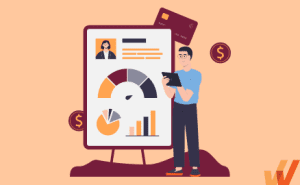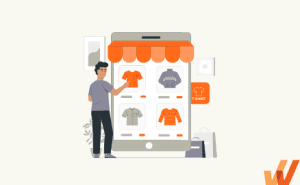Innovative digital technologies have disrupted the property management industry – and continue to share it – bringing better convenience to owners and renters, and improving efficiency and internal operations for property management companies.
Embracing digitalization in the property management sector is also more accessible than ever. Many solutions are available to strengthen tenant relationships and gain visibility to properties. There are also new opportunities to boost the bottom line through B2B software and technologies to improve internal operations.
Innovative property managers use these digital capabilities to drive results — not just as “nice-to-haves,” but as core competencies to stay competitive. In this article, we’ll explore how property management technologies have, and continue to, modernize outdated property management approaches and processes with more streamlined digital approaches.
What Is Digital Transformation in Property Management?
Digital transformation in property management means integrating modern technologies into operations and services. This includes automation, machine learning, and cloud platforms to simplify legacy systems and manual processes.
Digitalization empowers property managers with the tools to streamline repetitive administrative work. New property management software and tools speed up and even automate tasks that previously took hours, enabling staff to prioritize higher-value activities.
Transformation also provides renters and owners with more accessible, convenient self-service options. For example, renters can easily submit requests, pay rent, and connect online when needed. Owners can access visibility into reports, work orders, and communications through digital dashboards.
Cutting down the mundane tasks on their to-do lists allows property managers to focus on strengthening connections and delivering better service. Every small change has the potential to improve the experience for all parties.
Core Areas of Property Management Digitalization
Property management companies, from enterprise companies to SMBs, are finding new ways to use technology to improve experiences for staff and tenants. Here are the most impactful areas where these digital shifts are taking place.
1. Customer experience
Customer experience (CX) is center stage in property management. This fundamental shift places tenants and owners at the center of operations. But what does that look like and how does it drive value?
First, self-service functionality allows tenants and owners to manage interactions independently. Tenants can report maintenance issues, access documents, and more without waiting on managers. Property management software platforms make this autonomy possible. This can boost tenant satisfaction and loyalty long term.
Personalization takes it a step further by responding to individual needs and preferences. For example, CRM systems allow managers to tailor communications using data. This isn’t as simple as someone’s name in an email. It’s strategically nurturing relationships based on understanding their expectations.
As digital expectations rise, property management must deliver a customer experience that meets those standards. Making any self-service and personalization initiative work requires intuitive, user-friendly interfaces. This is where the solutions you choose matters most. Smart design and accessibility ensure all parties can navigate systems with ease.
2. Data
Data and analytics now serve as your compass when in property management. Making strategic calls without this information can cause companies to miss opportunities. Integrated platforms empower you to gain actionable insights into property performance, pricing, maintenance, and needs.
You can also use data to tailor services to tenant behaviors and preferences. For example, imagine using demographic insights to help customize communication channels and amenity offerings on short-term rental properties. This strategic personalization builds loyalty and helps you stand out.
Predictive analytics tools are particularly useful. These solutions let you see issues before they have an impact, so you can preventative actions. That can reduce costs and downtime. For instance, analyzing equipment lifespan and usage data allows you to schedule timely maintenance.
Enterprise property companies also utilize product analytics platforms to capture and analyze end-user behavior of new technologies. For example, they can analyze how tenants interact with property management self-service portals to identify areas of friction, and then optimize those processes.
That said, with data’s power comes the need for balance. Respecting privacy is crucial while using information in this way. It’s important to know what regulations apply to your area. This way, you can choose vendors and providers to help you stay in compliance.
3. Operational efficiency and process automation
The “cloud” is no longer just a place for basic data storage. Now the cloud powers new opportunities for operational efficiency. Adopting cloud-based software solutions elevates operational standards by centralizing data and enabling real-time updates across teams. This can transform your core processes.
It also ensures that team members across locations have access to the files they need when they need them. This is important, as 47% of digital workers struggle to find the information they need to perform their jobs effectively. That struggle can add up to hours of wasted time each week.
Process automation helps manage day-to-day functions. Expanding automation also revolutionizes routine property management tasks. You can automate processes like rent collection and maintenance requests to significantly reduce workloads and human error. Automation allows you to reallocate resources towards strategic initiatives, powering a more proactive and responsive management approach.
Some platforms even deliver combined automation and cloud software capabilities. With access to automated tasks and data from one intuitive platform, you gain the agility to navigate change without overwhelm.
4. Business model transformation
The traditional model of in-person real estate transactions is shifting to a predominantly online ecosystem. For example, tools can generate digital lease agreements and accept rent payments online. This transformation reaches beyond adapting to tech advances. It represents a strategic commitment to meeting the demands of today’s digitally savvy renters and buyers.
As digital transformation progresses, effective business model transformation goes hand in hand. Property managers must strike a balance. This balance isn’t just about meeting market demands. It focuses on nurturing tenant and owner relationships in a time when people seek convenience without sacrificing the human experience.
Related Resources
Digital Transformation Examples in the Property Management Sector
What specific systems are powering digital transformation in property management? Here’s a look at some of the tools behind this shift.
1. Property management software
The global property management software market is projected to grow from $22.05 billion in 2023 to $42.89 billion by 2030. Comprehensive property management software solutions like AppFolio and Buildium spearhead the digital transformation charge. These powerful platforms consolidate disjointed functions—from accounting and reporting to maintenance tracking and tenant communications—into unified, cloud-based systems.
For property managers, this integration provides operational visibility through centralized data and standardized processes. Tasks like collecting rent, tracking work orders, managing documentation, and connecting with tenants can now happen in one streamlined hub instead of across spreadsheets, paper files, and email chains. This powers transparency and responsiveness.
On the tenant end, portals and mobile apps allow instant access to submit payments or requests and communicate with managers. This around-the-clock convenience improves experiences and closes communication gaps.
One property management company in Florida used Appfolio to streamline efforts. Now they can do more in the same amount of time. This organization has three property managers meeting with seven to ten new homeowners per week and they achieve a 90% conversion rate with the help of this software.
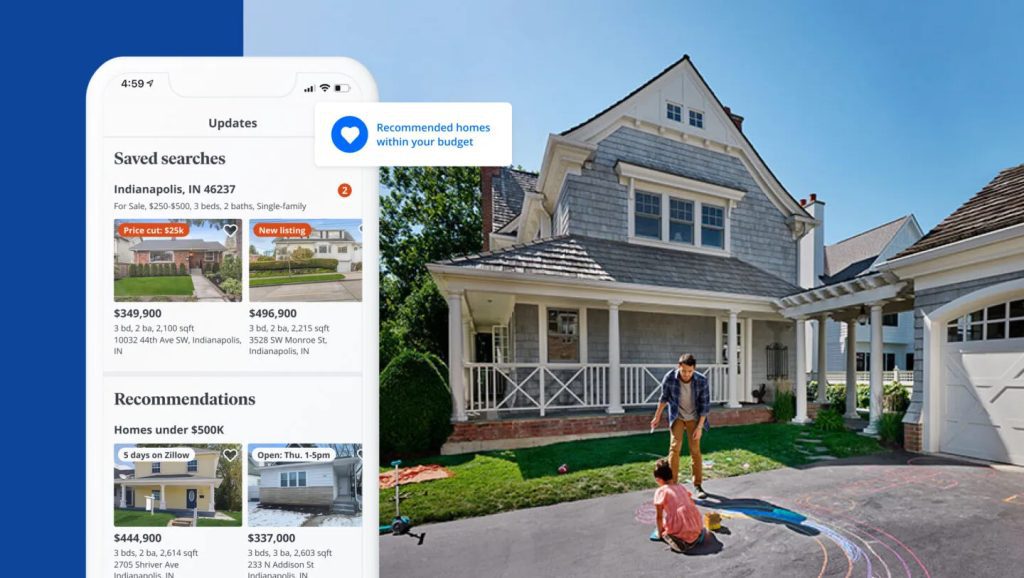
2. Online listing platforms
Online listing platforms have revolutionized rental property search, selection, and exposure. Before the existence of options like this, a tenant would need to see a “For Rent” sign or a newspaper ad to know about a property. This limited the exposure to locals who were actively searching.
Now, platforms like Zillow offer advanced search algorithms, comprehensive location-based data, and rich media like 3D home tours and floor plans to create engaging listings. So when potential tenants search for rentals, they immediately discover more options. Zillow alone draws 60M monthly visitors.
Landlords and property managers benefit by showing vacancies to relevant tenants looking for properties that fit their needs. The enhanced visibility drives more qualified traffic to listings without added advertising costs or effort. It’s a revolutionary marketing channel and an invaluable data resource that shows what’s happening in the market.
It also expands pre-screening and self-service options. Customers can find properties that meet their needs by filtering to find what works. Property management companies can more easily screen applicants after they submit information.
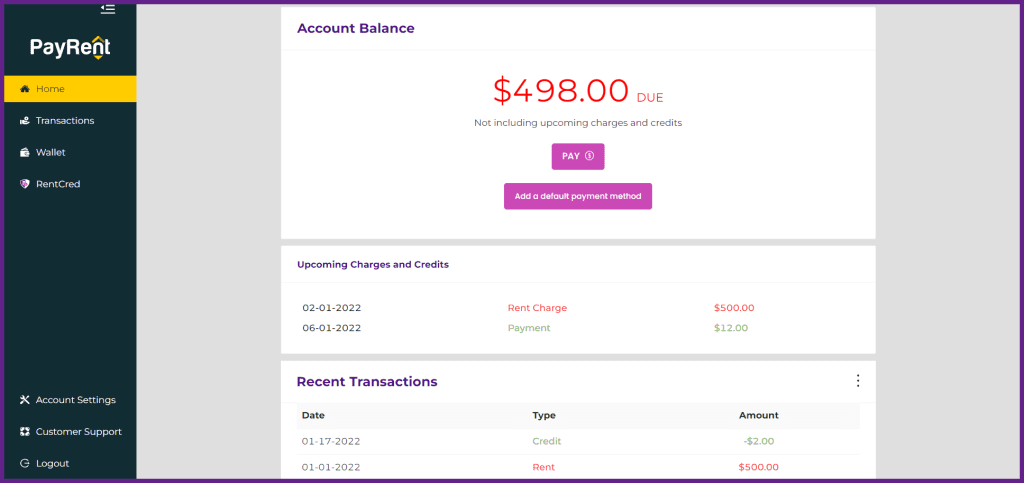
3. Online payments and renter portals
The days of tenants paying rent via paper checks and property managers manually processing payments are over. Online rent payment systems and dedicated tenant portals like those offered by PayRent are the new standard.
Tenants can securely pay rent via these portals. Automatic confirmations provide peace of mind the transaction and amount are logged accurately. Some platforms even offer various payment method options tailored to user preferences.
Property managers save on administrative work eliminating physical bank runs and deposit tracking. Customized payment reminders through notifications by text, email, and app alerts can reduce delinquencies on the tenant side.
A survey from the National Apartment Association shows there’s a high level of agreement across all business sizes on the opportunity to streamline financial functions. All business sizes cited processing more rent payments online as an opportunity. Moves like this free up capacity for staff to focus on strategy, relationships, and planning instead of chasing payments.
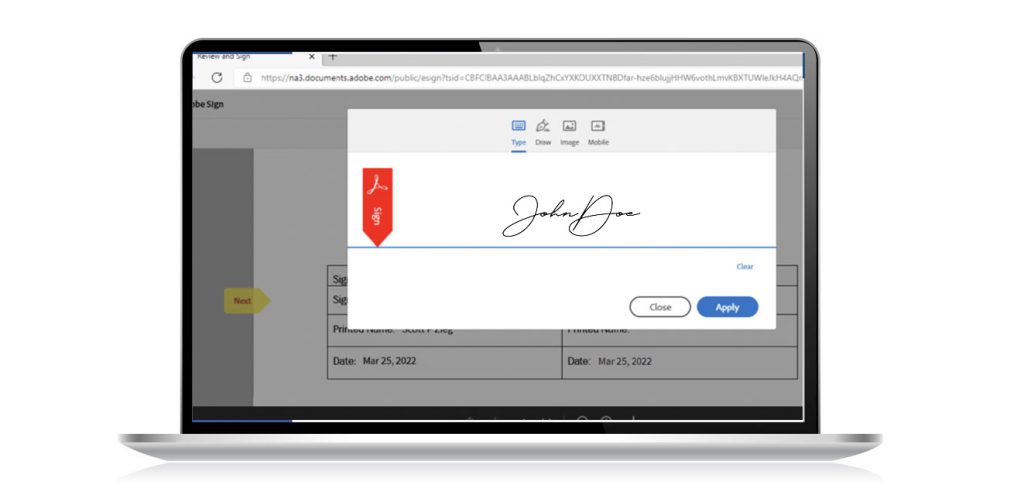
4. Document management and e-signatures
There are many paper assets related to properties, and just as many pain points around getting those assets from point A to Point B. With document management solutions like DocuSign, you can do away with printing, scanning, and faxing. Document management is simple and signatures take minutes.
All of this can also have a significant impact on the bottom line. Digitizing agreement processes has helped Camden Property Trust save over $25,000 each year on shipping costs. DocuSign eliminated much of the mailing, cutting costs and saving paper.
Property managers can assign document workflows with built-in automation for sending, tracking, signing, approving, and storing critical paperwork. Features like drag-and-drop templates, bulk sends, and deadline reminders remove friction. Timestamped audit trails also improve compliance and provide visibility to both parties.
For tenants, what previously may have required an in-person office visit can happen on any device. This reduces application completion dropoff while providing an early positive experience that builds confidence.
5. Video intercom systems
Integrating video intercom systems in residential and commercial properties shifts the property manager’s and tenant’s experiences, especially with security and communication. Brands like ButterflyMX go beyond simply controlling building entry to provide a better experience around who can access properties at any time.
For tenants, smartphones and in-unit intercoms allow visual verification of visitors. This strengthens personal security by visualizing expected guests, delivery people, or service workers. The confidence of actually seeing who seeks entry adds a much-needed layer of comfort and control over the living environment.
For example, the ButterflyMX entry system allows residents to see and speak with whoever is trying to access the property through live video sent directly to a mobile app. Residents can also grant managed building access to service providers like dog walkers and house cleaners through virtual keys. This is a popular feature in cities where on-demand services have exploded.
For property teams, digital access logs enhance oversight with clear, timestamped records of all building entries. These systems can integrate with other on-site technologies like lighting and elevators for a cohesive smart building environment.
Additionally, remote management capabilities allow staff to grant or revoke access instantly without being onsite. Some solutions offer custom permissions settings for different user groups—think tenants, cleaners, contractors, Airbnb guests—to optimize operational efficiency.
Challenges of Digital Transformation in Property Management
As you look into the benefits of digital transformation in property management and the tools driving this change, it’s crucial to consider the potential hurdles. What are the roadblocks to adopting these technologies? How can you navigate them? Awareness of common challenges is key.
1. Digital upskilling for property managers
Transitioning from traditional to digital processes requires property managers to upgrade their skill sets. Training initiatives like the National Apartment Association education programs are crucial for developing digital literacy to leverage sophisticated software and tools.
It’s about accessing, understanding, and applying information. This includes operating devices and using applications that improve the experience for everyone. While it’s true that technology touches many aspects of our lives, some workers may have missed out on these foundational digital literacy skills. It’s worthwhile to revisit them.
Beyond initial training, continued upskilling opportunities ensure managers adapt as technology progresses. Patience and investment in upskilling, whether via online courses, certifications, mentorships, or real-world experience, empowers managers to thrive in digitally-driven roles.
2. Transitioning to online systems and processes
Planning is critical when shifting databases, resident communications, and financial workflows to new platforms. How do you do it with minimal stress? By documenting processes, data fields, reporting needs, and system interactions to make the transition smoother. You’ll also need to redefine efficiency and monitor progress over time. It can be a good investment to hire a digital transformation consultant.
Enterprise property management companies can manage legacy application modernization and provide continuous end-user support that enables all technology users (employees and tenants) with in-app guidance through the use of a digital adoption platform (DAP).
A DAP like Whatfix allows companies to create in-app guided experiences like Tours, Task Lists, Flows, Self Help, and more that enable end-users with contextual, moment-of-need support that enables them to utilize digital applications and their contextual workflows fully.
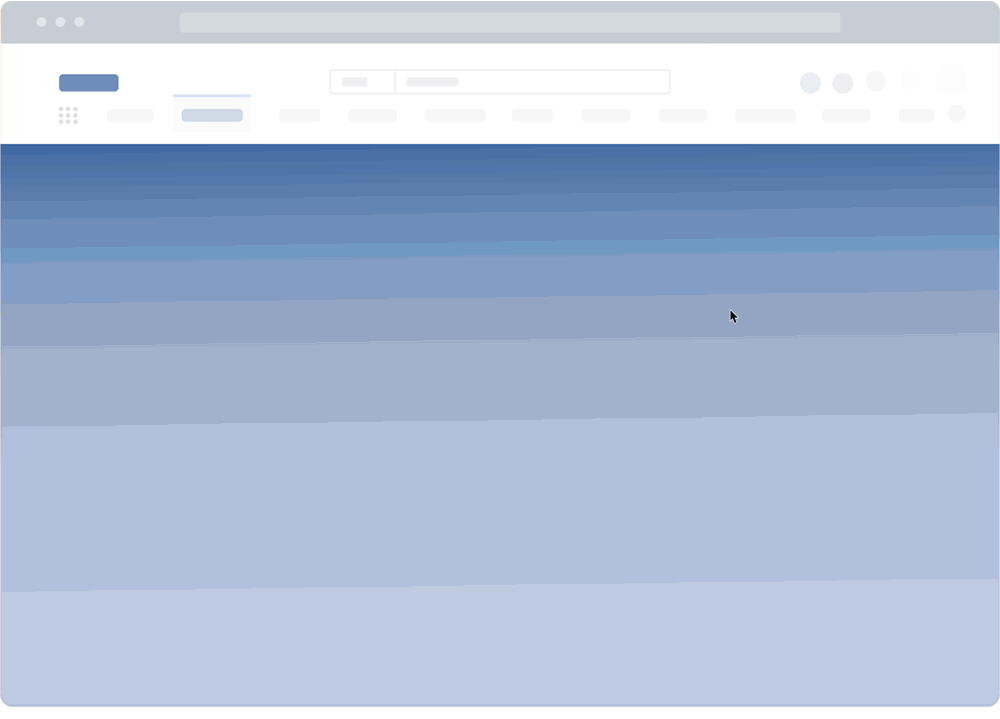
3. Onboarding renters to online portals
While managers tackle new systems, they must also guide renters in adopting resident portals. Sending an email with an introduction to a new system isn’t enough. Tenants need details and specific instructions on how and why to use the portal.
There may be hesitations users have about getting started. That could be something like a resistance to change or something more complex, like a lack of trust in a particular tool or system.
For instance, only 39% of U.S. adults indicate that they believe today’s AI technologies are safe and secure. If you’re implementing a system that uses AI, it could be worthwhile to walk users through the way it works and how they can safely get the most out of it.
Also, remember that onboarding is a process, and users may continue to have questions as they work through it. You can continue nurturing real estate tech adoption post-launch through surveys. That way, you can better address any struggles.
With a DAP like Whatfix, organizations can create contextual user onboarding experiences using a mix of Task Lists, Pop-Ups, and Flows that guide end-users through a new platform, its core features, and guide them to value. This can continuous through the lifecycle of a tool, providing continuous, on-demand guidance and support to your end-users – from customers, tenants, property managers, and other employees.
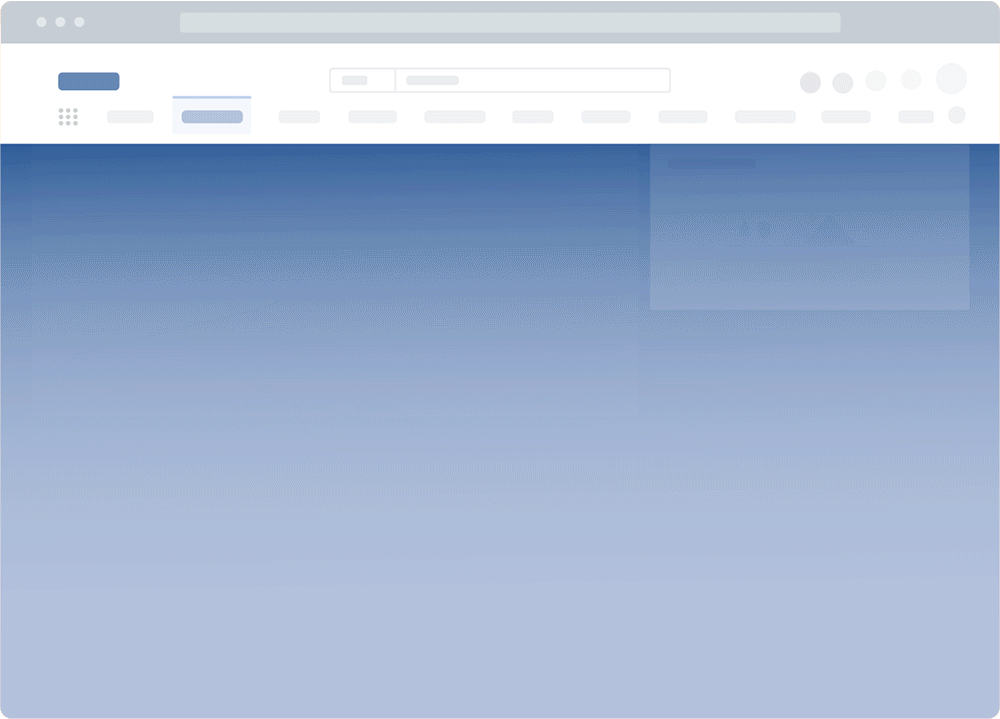
4. Ensuring compliance with local laws and regulations
Before getting lost in all the possibilities of digital transformation, property professionals must ensure online tools and automated workflows align with their region’s legislation. Non-compliance is bad for business and the bottom line, as violations often come with fees.
The goal should be to make compliance an ongoing priority, not an afterthought. One way to start on the right path is to understand how vendors or solutions help you get in compliance and keep up with changing regulations.
For example, features like Yardi’s compliance monitoring safeguard standards for data privacy, fair housing, and reporting to stay current as laws progress. They also work with third-party vendors to deploy regular penetration tests of the network and applications.
With a DAP like Whatfix, ensure your data is clean with Field Validations and Smart Tips. Field Validation alerts end-users with error messages to ensure fields are entered incorrectly, not at all, or in the wrong format. Smart Tips provides contextual information on how to enter information correctly and presents additional help for local laws.
5. Providing end-user support
End-user support provides a lifeline for managers and renters adopting unfamiliar systems. Create resources like knowledge base articles, live chat features, and troubleshooting tips. It’s important to acknowledge successful digital transformation requires more than just implementing technology.
Even when your team members or tenets hit a roadblock, you can still provide them with a level of convenience and solve problems faster. This continual, on-demand assistance closes knowledge gaps and prevents frustration. Well-rounded support can improve digital experiences, which can promote adoption and increase ROI.
With a DAP like Whatfix, enable all technology end-users with Self Help. Self Help automatically crawls and aggregates your knowledge articles, videos, help content, and in-app guidance into one, searchable database that overlays your applications’ UI and provides contextual, on-demand support.
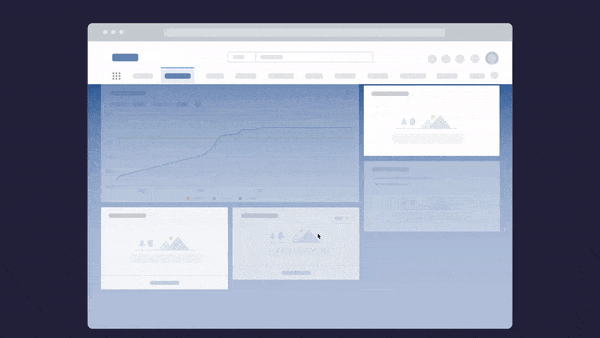
6. Using data to improve end-user experiences
Collecting data holds little value unless property professionals use insights to better serve end-user needs. Focus on using data to your advantage to improve experiences for everyone involved with a property.
For example, look at the frequency of maintenance requests on items in your units. If 20% of tenants show appliance issues, you may research widespread replacements. Predictive capabilities can guide maintenance, renewal incentive offers, pricing adjustments, and more.
These capabilities also extend beyond tenant management. You could look at what’s behind most of your customer service calls each month and use that information to develop an FAQ page for your website. But remember, analytics software provides the information. You must determine appropriate next actions and address weak points that you uncover.
With Whatfix, track and analyze and end-user action with User Actions. This uncovers areas of end-user friction, maps user flows, builds user cohorts, and more. Use this data to create new in-app guidance and end-user, as well as continuously optimize and test new workflows and features.
7. Driving end-user adoption
User-friendly property management software alone won’t guarantee end-user adoption. Proactive initiatives make individuals comfortable and move them toward digital convenience. Clear training and education show the value of platforms.
Still, know that you may encounter some people who are hesitant to embrace a new system. Reframe the technology as an assistant rather than an inhibitor. If the platform you’re using offers many options and features, be sure to direct users to what’s most relevant to them.
For example, you may choose to start long-term tenants with an interactive walkthrough on how to renew their lease agreement or submit maintenance requests. Showing people how to do tasks that are most relevant to their needs can reduce overwhelm.
With a DAP like Whatfix, enable your technology end-users (property managers, tenants, and any user) with contextual in-app guidance, information, and support to fully utilize technology. Use its end-user analytics to identify areas of friction that can be improved with better application experiences.
Property Management Technology & Software Clicks With Whatfix
Digital transformation is challenging, costly, resource-intensive, and has lengthy implementation and migration cycles. Accelerate your property management digital transformation by enabling your property managers and renters with contextual in-app guidance and real-time support with Whatfix’s digital adoption platform (DAP).
Whatfix provides multifamily and property management enterprises with a no-code editor to create in-app, moment-of-need support and contextual guidance to property managers, on-site employees, and renters on all new property management and renter technologies and process changes. This reduces time-to-proficiency and achieves new levels of productivity and proficiency through better software adoption, as well as provides customers with self-service, personalized, and guided user experiences.
Whatfix empowers real estate organizations to:
- Create in-app Flows and Task Lists that guide employees and customers step-by-step through digital processes and applications.
- Enable end-users with Self Help, providing a searchable help wiki that connects to all your help and support documentation, FAQs, help desk articles, and more – that overlays on your digital UI.
- Notify end-users of application process updates, compliance changes, company announcements, and more with Pop-Ups and Beacons.
- Provide contextual Smart Tips that enable end-users with timely information that nudges the to take the correct in-app action.
- Use Field Validation to ensure data is entered in full, in the correct format.
- Collect end-user feedback such as NPS, training and onboarding feedback, and bug identification with In-App Surveys.
- Analyze end-user behavior with User Actions and Enterprise Insights by tracking custom in-app events to optimize user journeys, segment users into cohorts, identify areas of friction, and more.
With Whatfix, you can understand how technology is being used and what is being underused. This makes it easier to adjust software training and adoption strategies. All to empower property managers, renters, and owners to maximize the value of digital tools.

